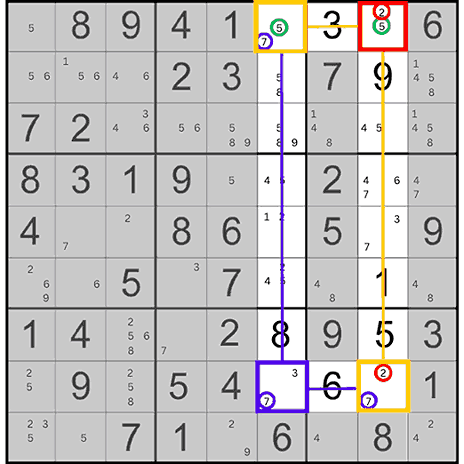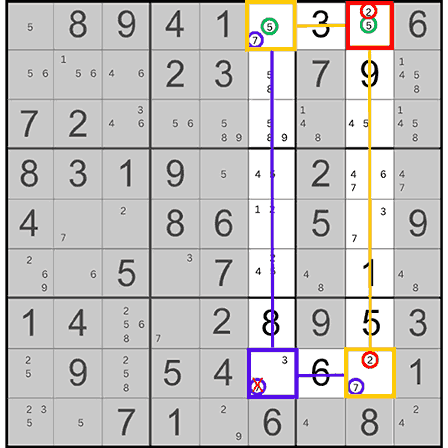The ‘Y-Wing’ technique is an advanced technique for solving Sudoku puzzles, which is suitable for those who enjoy solving more challenging levels. Similar to the ‘X-Wing’ method, the ‘Y-Wing’ approach involves identifying specific cells, but it uses three key cells instead of four.
Let’s have a better understanding with an example. As shown in first image, find a cell with only two possible candidates, such as 2 and 5. This cell will be referred to as the ‘pivot’, highlighted with the red frame. Next, identify two more cells that also have two candidates each; these are the ‘branches’ shown with the yellow frame. The branches must share one candidate with the pivot, and the second candidate must be common between the branches themselves. For instance, suppose we have cells with the notes 5-7 and 2-7. Here, 5 and 2 match the pivot’s candidates, while 7 appears in both branches.


Now, as shown in the second image, observe where the rows and columns of these branch cells intersect. As shown with the blue color, mentally draw lines to visualize this intersection within the Sudoku grid. The key intersection cell, highlighted with the blue frame, has candidates 3 and 7. Since we’ve determined a pattern in the branches, we can eliminate 7 from the intersection cell, leaving 3 as the only possibility. Thus, the ‘Y-Wing’ method helps confirm that 3 must occupy this cell.


Using the ‘Y-Wing’ technique not only solves this specific cell but also simplifies the process of filling in other blocks, columns, and rows. Download our free printable Sudoku puzzle books and practice more.
